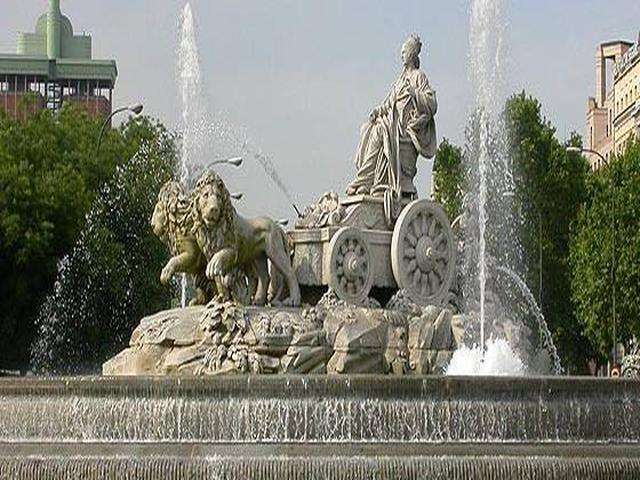Cybele

The Cibeles fountain, also known as La Cibeles, is a stunning monument located in the heart of Madrid, Spain. This monumental fountain is situated in the square of the same name and has become an iconic symbol of the city. The fountain was originally designed as part of an urban remodeling plan in the 18th century by King Charles III, who aimed to enhance the beauty of the Spanish capital with Neoclassical aesthetics. The project included several fountains adorned with classical mythological motifs, such as the Fountain of Neptune and the Fountain of Apollo, as well as the creation of a Museum of natural sciences (now the renowned Prado Museum) and the Royal Botanical Garden. Although not all aspects of the plan came to fruition, the completion of the Cibeles fountain quickly made it a beloved landmark among locals, earning the nickname "Salón del Prado" for its beauty and popularity.
The design of the Cibeles fountain is a tribute to the mother goddess Cybele, who is associated with Rhea in Greek mythology. Cybele symbolizes fertility and the earth, depicted in the fountain riding a chariot drawn by lions named Atalanta and Hippomenes. The intricate sculptures and detailed carvings on the fountain showcase the skill and artistry of the craftsmen who brought this masterpiece to life. The square surrounding the fountain was originally known as Plaza de Madrid, but in 1900 it was renamed Plaza de Castelar in honor of a prominent Spanish politician.
Visitors to Madrid often flock to the Cibeles fountain to admire its grandeur and take in the beauty of the surrounding area. The fountain has become a popular meeting spot for locals and tourists alike, offering a picturesque backdrop for photos and a tranquil oasis in the bustling city center. The square where the fountain is located has also become a hub of activity, with nearby cafes, shops, and cultural attractions adding to the vibrant atmosphere of the area. Whether you're exploring the city's rich history, enjoying a leisurely stroll, or simply taking in the sights and sounds of Madrid, the Cibeles fountain is a must-see destination that captures the essence of this dynamic and captivating city.
© ChatGPT 3.5
Currently it is delimited by the large buildings of the Buenavista Palace (Army Headquarters), Linares Palace (Casa de América), Communications Palace (previously the headquarters of the Post Office and currently the Mayor's Office of Madrid) and the Bank of Spain. The curious thing is that each of these monuments belongs to a different neighborhood of Madrid.
The artists in charge of its execution were Francisco Gutiérrez (figure of the goddess and the chariot), Roberto Michel (the lions) and the ornamental artist Miguel Ximénez, according to the design of Ventura Rodríguez. The goddess and the lions were sculpted in purple marble from the town of Montesclaros (Toledo), and the rest in stone from Redueña, a town located 53 km north of Madrid, near the La Cabrera mountain range.
Being located in such a central place, its eventful history, and even recent traditions as a place for sporting celebrations of Real Madrid's triumphs, have contributed to making it one of the best-known symbols of Madrid worldwide.